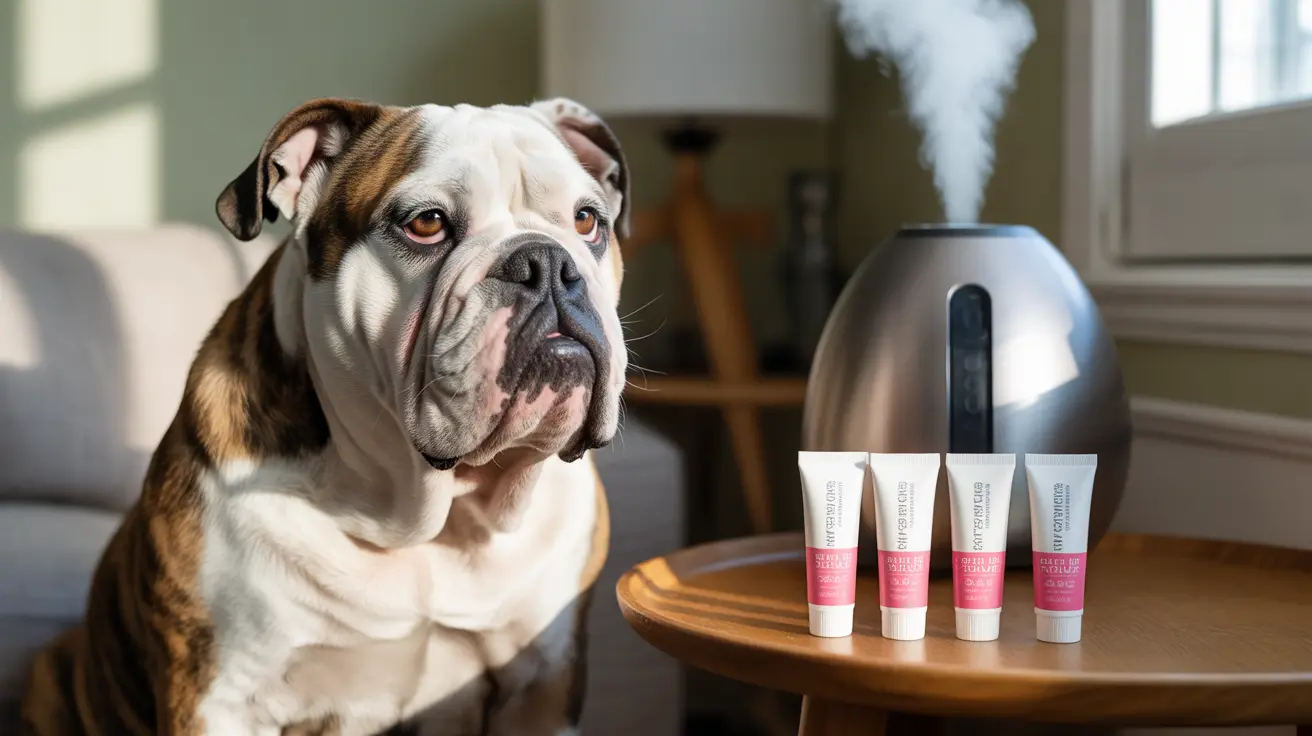Common Causes of Chapped Lips in Dogs
Several factors can contribute to your dog developing chapped lips:
Environmental Factors
Cold weather, low humidity, and excessive wind exposure can strip moisture from your dog's lips. Winter months are particularly challenging, as indoor heating can further dry out the air and affect your pet's skin health.
Medical Conditions
Underlying health issues such as allergies, autoimmune disorders, or vitamin deficiencies can manifest as dry, cracked lips. Skin conditions like dermatitis or hyperkeratosis may also affect the lip area.
Behavioral Habits
Excessive drooling, persistent licking, or mouth breathing can contribute to lip dryness and irritation. Some dogs develop these habits due to anxiety or physical discomfort.
Signs Your Dog Has Chapped Lips
Physical Symptoms
Look for these indicators of chapped lips in your dog:
- Visible dryness or flaking
- Cracking or splitting of the lip tissue
- Redness or inflammation
- Bleeding or scabbing
- Changes in lip color or texture
Behavioral Changes
Dogs with chapped lips may exhibit:
- Increased pawing at the mouth
- Reluctance to eat or play with toys
- Excessive licking of the lips
- Signs of discomfort when touched around the mouth
Prevention and Treatment
Daily Care
Prevent chapped lips through regular maintenance:
- Keep your dog well-hydrated
- Use a humidifier in dry environments
- Clean and dry the mouth area after meals
- Consider using dog-specific lip balms or moisturizers
Professional Care
Some cases require veterinary intervention, especially if:
- Symptoms persist despite home treatment
- There's significant bleeding or inflammation
- Your dog shows signs of pain or distress
- You suspect an underlying health condition
Breed-Specific Considerations
Some dog breeds are more susceptible to chapped lips due to their facial structure:
- Breeds with droopy lips (Saint Bernards, Bloodhounds)
- Brachycephalic breeds (Bulldogs, Pugs)
- Dogs with prominent lip folds
Frequently Asked Questions
Can dogs get chapped lips and what causes dryness or cracking in their lip skin?
Yes, dogs can get chapped lips due to environmental factors, medical conditions, or behavioral habits. Common causes include dry weather, allergies, excessive licking, and underlying health issues.
How can I naturally treat or prevent chapped lips in my dog at home?
Natural treatments include maintaining proper hydration, using pet-safe moisturizers, running a humidifier, and keeping the mouth area clean and dry. Regular monitoring and good oral hygiene are essential preventive measures.
Which dog breeds are most prone to lip chapping and related skin fold problems?
Breeds with droopy lips or facial folds, such as Bulldogs, Saint Bernards, and Bloodhounds, are most susceptible to lip problems. Brachycephalic breeds also face higher risks due to their unique facial structure.
When should I take my dog to the vet for persistent or severe chapped lips?
Seek veterinary care if symptoms persist beyond a few days, if there's bleeding or severe inflammation, or if your dog shows signs of pain or behavioral changes. Professional evaluation is crucial to rule out serious underlying conditions.
Are human lip balms safe to use on my dog's dry or cracked lips?
No, human lip balms should not be used on dogs as they may contain harmful ingredients if ingested. Always use veterinary-approved products specifically designed for canine use.
Conclusion
While chapped lips in dogs might seem like a minor concern, they can indicate more serious health issues and should be monitored carefully. With proper prevention and prompt treatment, most cases can be managed effectively. Remember to consult your veterinarian if symptoms persist or worsen, ensuring your furry friend maintains optimal oral health.






